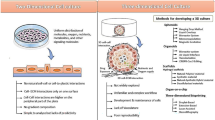Summary
α-Protein growth fraction (AGF) eliminates the 60- to 90-day adaptive phase required to establish actively growing cultures of HeLa (Gey), human heart (Girardi), KB (Eagle) and other established cell lines in serum-free chemically defined medium A3. AGF is effective at less than 0.4 μg per ml. By using the procedures described in the text, it is possiblee to culture HeLa cells is very simple media such as Eagle's basal medium. The properties of AGF are such that it may be adsorbed on glass or plastic flasks. Glass flasks treated with AGF retain full activity after washing with acetone, and treatment with ethyl ether and chemically defined medium. Adsorbed AGF is destroyed by trypsin. AGF can detoxify protamines, polylysines or histones. It will reverse the aggregation response induced by adding complexes composed of carboxymethylcellulose (CMC) and basic proteins. The results support the contention that highly adsorptive AGF functions at the cell surface and is capable of modifying the response of the cell to its environment.
Similar content being viewed by others
References
Holley, R. W. 1975. Control of growth of mammalian cells in cell culture. Nature 258: 487–490.
Holmes, R. 1967. Preparation from human serum of an alpha-one protein which induces the immediate growth of unadapted cells in vitro. J. Cell Biol. 32: 297–308.
Hall, K., and K. Uthne. 1971. Some biological properties of purified sulfation factor (SF) from human plasma. Acta Med. Scand. 190: 137–143.
Cohen, S. 1962. Isolation of a mouse submaxillary gland protein accelerating incisor eruption and eyelid opening in the new-born animal. J. Biol. Chem. 237: 1555–1562.
Gospodarowicz, D. 1974. Localisation of a fibroblast growth factor and its effect along and with hydrocortisone on 3T3 cell growth. Nature 249: 123–127.
Spiro, R. G. 1960. Studies on fetuin, a glycoprotein of fetal serum. J. Biol. Chem. 235: 2860–2869.
Lieberman, I., F. Lamy, and P. Ove. 1959. Nonidentity of fetuin and protein growth (flattening) factor. Science 129: 43–44.
Pricer, W. E., Jr., and G. Ashwell. 1976. Subcellular distribution of a mammalian hepatic binding protein specific for asialoglycoproteins. J. Biol. Chem. 251: 7539–7544.
Holmes, R., and S. W. Wolfe. 1961. Serum fractionation and the effects of bovine serum fractions on human cells grown in a chemically defined medium. J. Biophys. Biochem. Cytol. 10: 389–401.
Holmes, R., J. Helms, and G. Mercer. 1969. Cholesterol requiremenets of primary diploid human firoblasts. J. Cell Biol. 42: 262–271.
Grand Island Biological Corporation. 1978–1979.Medium Composition Catalogue. Grand Island, New York, pp. 130–131.
Shannon, J. E., and M. L. Macy. 1973. Freezing storage and recovery of cell stocks. In: P. F. Kruse, and M. K. Patterson (Eds.),Tissue Culture Methods and Applications. Academic Press, New York, pp. 712–718.
Ryser, H. J.-P. 1968. Uptake of protein by mammalian cells. An underdeveloped area. Science 159: 390–396.
Holmes, R., N. Mohamed, and G. E. Mercer. 1975. Complexes formed between basic and acidic proteins that induce a biological response. Fed. Proc. 34: 537.
Holmes, R. 1959. Long-term cultivation of human cells (Chang) in chemically defined medium and effect of added peptone fractions. J. Biophys. Biochem. Cytol. 6: 535–536.
Takaoka, T., and H. Katsuta. 1971. Long-term cultivation of mammalian cell strains in protein and lipid-free chemically defined synthetic media. Exp. Cell Res. 67: 295–304.
Hamilton, W. G., and R. G. Ham. 1977. Clonal growth of Chinese hamster cell lines in proteinfree media. In Vitro 13: 537–547.
McKeehan, W. L., D. P. Genereux, and R. G. Ham. 1978. Assay and partial purification of factors from serum that control multiplication of human diploid fibroblasts. Biochem. Biophys. Res. Commun. 80: 1013–1021.
Vaheri, A., and D. F. Mosker. 1978. High molecular weight, cell surface-associated glycoprotein (fibronectin) lost in malignant tranformation. Biochim. Biophys. Acta 516: 1–25.
Author information
Authors and Affiliations
Rights and permissions
About this article
Cite this article
Holmes, R., Mercer, G. & Mohamed, N. Studies of α-protein in human cell cultures. In Vitro 15, 522–530 (1979). https://doi.org/10.1007/BF02618154
Received:
Accepted:
Issue Date:
DOI: https://doi.org/10.1007/BF02618154




